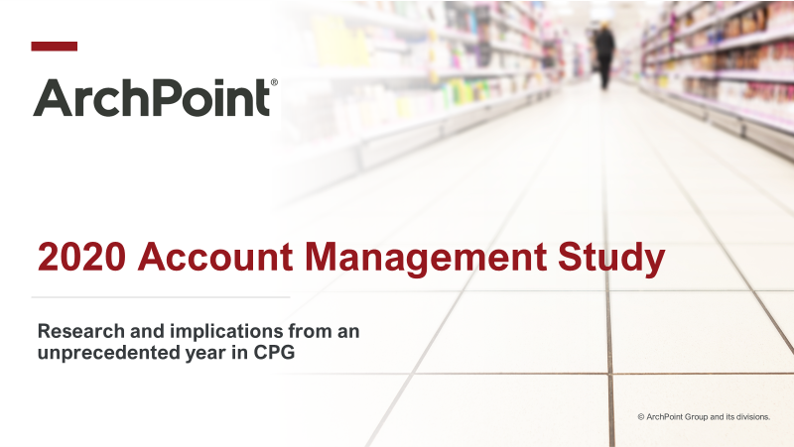Research and implications from an unprecedented year in CPG
In CPG, as in many other industries, the buyer and seller relationship has changed more in the past year than in the past decade. COVID-19 has had a significant impact on the supply chain and the subsequent pattern of behavior on both sides of the desk. Normal activities have been sidelined to focus on supply chain volatility, changing consumer purchase behaviors, and technology implications. While many could have predicted the buyer/seller relationship would eventually move to a more virtual-centric environment, nothing could have prepared us for the monumental impact of the pandemic and what it has done to traditional business practices and ways of working.
We at ArchPoint felt this impact across all divisions. Our Products and Sales divisions serve the CPG industry, and we witnessed firsthand the challenges faced by manufacturers, retailers, and consumers. These challenges were the motivation behind this study. We felt a need to speak to buyers and sellers on what has transpired and what they see for the future of CPG. We interviewed manufacturers and grocery retailers to understand their new reality. Data from these interviews along with other supporting sources was used in this report.
Things are changing. We will not go back to the way things were. But if we can be flexible, quickly embrace changes, adjust practices, shift programming and utilize technology, we can move forward. Those who lean into the new environment can capitalize on it, but it requires a willingness to rethink, refocus, and retool. We believe the opportunity exists to reinvent how buying and selling is done to drive productivity, creativity, and bottom-line profits for all.
Summary of Key Findings
- Demand pressure strained CPG supply chains and exposed cracks across the whole infrastructure. The pandemic stressed supply chains, and key players in the system felt the impact of the industry’s intense drive for ultimate efficiency and the risk to the supply it created. With such tightly managed systems, organizations did not have the ability to be pliable and reactive.
- Technology helped maintain buyer/seller communications but limited the depth of connection. With communication moving to a virtual space, relationships relied heavily on technology. For many, this shift felt overdue and positive in regard to reduced resource-related expenditures and efficiency, but others missed in-person opportunities to build personal relationships.
- Pandemic fears and new ways of working increased stress and decreased motivation for employees. Maintaining connection among teams and keeping employees motivated was challenging this year. People had to adjust to new ways of working and in many instances, the remote nature of work impeded personal lives.
- The CPG industry went back to basics in assortment and looks to rethink promotional spending practices in the future. In the first waves of the pandemic, CPG suppliers and retailers shared a common goal to keep core products on the shelf. Almost a year later, as organizations adjust to pandemic purchasing behavior, companies are rethinking strategies, services, product portfolio, and promotional tactics.
Also Included: How to Win in the Next Normal
- The Buyer/Seller Interface
- Required Future Investment by Organizations and Leaders
- How to Rethink Local Market Support: Food Brokers

